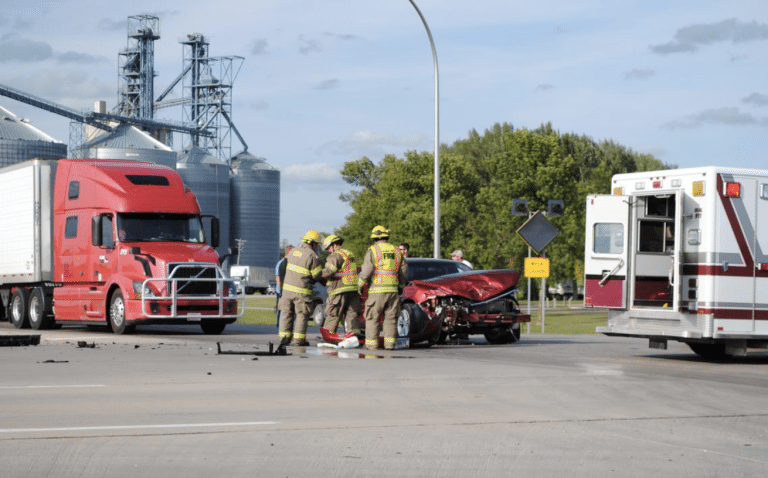Clara City promotes itself as the “Crossroads on the Prairie,” but there is a downside to the meeting of state Highways 23 and 7 at the south end of the community.
Traffic accidents at the intersection of the two highways have long been a concern for emergency responders and law enforcement.
At the urging of elected officials in Clara City, Chippewa County, and the Highway 23 Coalition, the Minnesota Department of Transportation is looking for ways to make the intersection a safer one. The Willmar, District 8 office is now in the process of seeking a consultant to undertake an intersection control study of the area.
The District 8 office has been able to budget funds for the study this fiscal year, according to Lindsey Bruer, regional planner for the district. The study is estimated to cost $80,000 to $90,000.
MnDOT hopes to have a consultant selected in the next couple of months. A recommendation on how to improve the intersection could be ready by September.
The study has two objectives. Along with making the intersection safer, MnDOT is looking for ways to improve traffic mobility on Highway 23.
Although it is the busier of the two highways, traffic on Highway 23 is required to stop at the intersection while Highway 7 traffic flows at 45 miles per hour. Traffic counts from 2018 show an average daily traffic volume of 4,650 vehicles on Highway 23 north of the intersection and 3,300 south of it. On Highway 7, the volume was 2,500 vehicles east of the intersection and 3,100 west of it.
Both highways are important corridors for moving freight in the region, and the traffic counts include many large trucks. The heavy commercial traffic on Highway 23 north of the intersection was 620 trucks per day and 520 to the south in 2018. On Highway 7, the count showed 500 heavy commercial vehicles west and 435 east of the intersection.
A change in elevation due to a Highway 7 bridge over the Burlington Northern Santa Fe Railroad line west of the intersection may be the reason for stopping the Highway 23 traffic. The bridge affects sight lines for drivers.
Bruer said the consultants who take on the study will examine a full range of possible issues at the intersection.
They will evaluate how different intersection types could improve safety and mobility. Traffic signals, a roundabout, or a reduced conflict, J-turn configuration are among the intersection types likely to be considered, she explained.
MnDOT does not have funds set aside for construction to make changes to the intersection. Once a consultant’s recommendation is received, MnDOT will look at whether it can find funding to undertake the improvements, said Bruer. At this point, there is no way to know when improvements could be constructed.
Article written by Tom Cherveny for the West Central Tribune on

